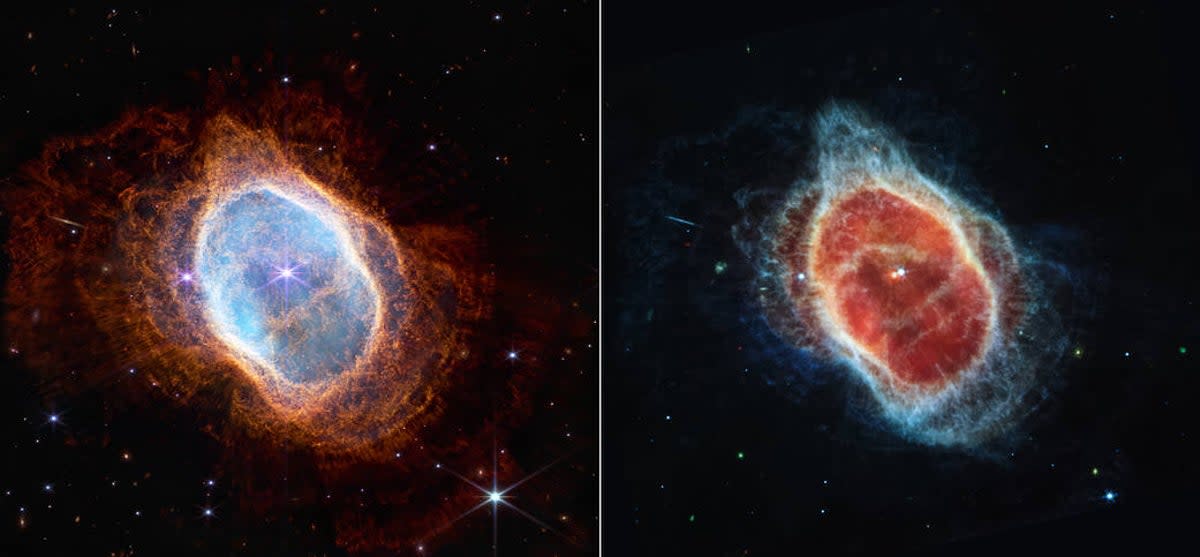New images show just how astonishing new James Webb Space Telescope is compared with Hubble

The long awaited James Webb Space Telescope was pitched as a next generation telescope that would see further, deeper, and in more detail than the venerable Hubble Space Telescope.
Now that the first full colour images from Webb have been made public, it’s easy to see the new telescope will more than live up to expectations.
Astronomers, scientists, journalists, amateur enthusiasts have already begun posting comparisons between the Hubble and Webb images. As stunning as Hubble imagery was and continues to be, the contrast between the two instruments is immediately evident.
Science journalist Jonathan O’Callaghan, for instance, shared the Hubble and Webb images of the Southern Wheel Nebula, an enormous cloud of gas violently expelled from a dying star. The level of detail and colour apparent in Webb’s image is large step beyond the level rendered by Hubble in 1998
Hubble's view of the Southern Ring Nebula in 1998 vs JWST in 2022 pic.twitter.com/ESdjIMagrx
— Jonathan O’Callaghan (@Astro_Jonny) July 12, 2022
Astronomer Kelvin Getley Tweeted an animation that switches between the Hubble and Webb deep field images, a field of very distant galaxies magnified by the gravity of the massive foreground galaxy cluster SMACS 0723. The Webb image was the very first from the new telescope to be revealed to the public by US President Joe Biden on Monday evening.
My (admittedly very rough) attempt at a Hubble v #JWST comparison. And this is literally just the beginning. pic.twitter.com/EjGqwg4yhn
— Dr. Kelvin Getley 💉💉💉 (@TheGM2K) July 12, 2022
Sophia Gad-Nasr, a PhD student in cosmology and particle physics at University of California, Irvine, also shared a comparison between the Webb and Hubble deep field images.
The image taken by the JWST compared to one taken by Hubble, of the galaxy cluster SMACS 0723.
It's s a gravitational lens, showing us the light of galaxies that are far behind the cluster in arcs around it. I tried to orient them the same. LOOK AT THE DIFFERENCE. pic.twitter.com/8jphIUHRjn— Sophia Gad-Nasr (@Astropartigirl) July 11, 2022
Webb was designed to see further and deeper than Hubble, beginning with Webb’s much larger primary mirror. Although segmented into 18 gold-coated beryllium hexagons, Webb’s 6.5-metre mirror can gather significantly more light than Webb’s 2.4-metre diameter Mirror, allowing Webb to see much fainter objects.
And the most distant objects in the universe are not only faint, they appear mostly in the infrared, the expansion of space itself over the billions of years it took the light to reach our Solar System having stretched out the light’s wavelength. Whereas Hubble could see a little into the infrared end of the spectrum, Webb is tuned to see only infrared light.
The first Webb images are only early observations, short exposures taken more as tests than rigorous scientific investigations. As the new space telescope begins its full suite of scientific operations over the summer, more images should become available that Nasa officials say will see further still.

